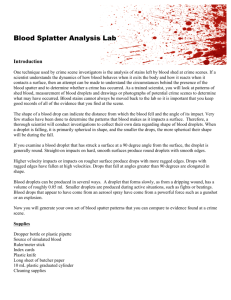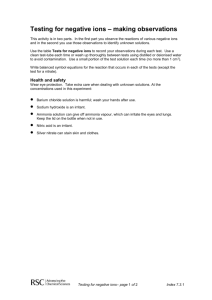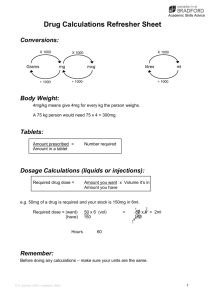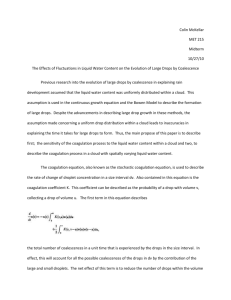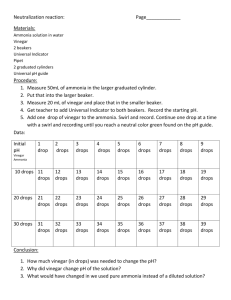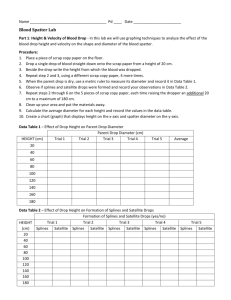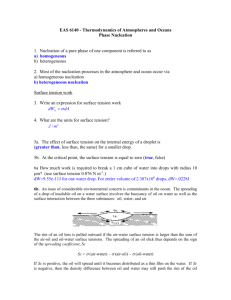Blood: Drops and Spatter
advertisement
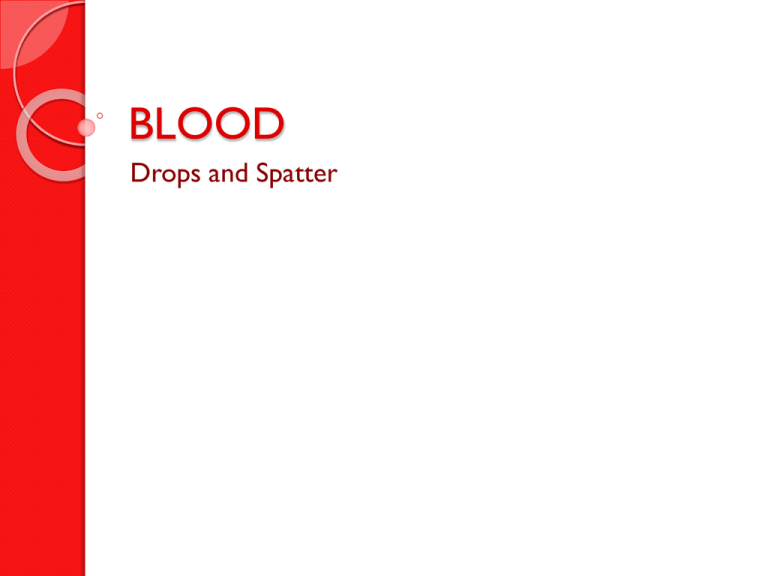
BLOOD Drops and Spatter Surface Tension The liquid in a drop of blood is held together by a cohesive force known as surface tension Surface tension keeps a drop of blood in a spherical shape as it falls If any of the blood overcomes the cohesive force and separates from the main drop of blood, it will form secondary droplets known as satellites Satellite Blood Drop Blood Drops Blood drops are subject to the same principles of physics as any free-falling object The force of a free-falling object can be expressed by the formula: F = ma where F = force m = mass a = acceleration due to gravity (9.8 m/s2) Blood Drops (cont.) The longer an object is falling, the greater the speed of descent and thus the greater the kinetic energy In actual crime scene analysis, the most important variable to consider and try to control is the contact surface itself When striking a surface, the blood will leave a pattern that is very much dependent on the type and nature of the landing surface Blood Drops (cont.) The blood drop will not break apart on a hard and less porous surface (i.e. glass) A soft and porous surface (i.e. concrete) causes the blood drop to break apart GLASS CONCRETE CARDBOARD Blood Drops (cont.) The shape of a blood drop can indicate the distance from which the blood fell and the angle of impact Round drops: ◦ The drop struck the surface at a 90o angle ◦ If the edges of the drop are smooth, it indicates a low velocity ◦ If the edges are ragged, it indicates a high velocity Blood Drops (cont.) Elongated drops: ◦ The drop struck the surface at an angle greater than 90o ◦ The larger the angle, the more elliptical the droplet ◦ The tail of a drop indicates the direction the blood travels ◦ Smaller drops are produced during active situations (i.e. struggle) ◦ Very small drops indicate that the wound was produced by a powerful force (i.e. gunshot) Directionality of Blood Drops When blood comes into contact with another surface, the blood tends to stick or adhere to it As a result, the point of impact may appear to be darker and wider than the rest of the drop Momentum tends to keep blood moving in the direction it was traveling, but cohesion keeps most of the blood as one drop Directionality of Blood Drops (cont.) As blood droplets move away from their source, they elongate and produce a thinner tail-like appearance The tail points in the direction of blood’s movement Satellites may appear in front of the moving droplet of blood Direction Of Blood Movement Lines of Convergence If there are at least two drops of blood spatter, the location of the source of blood can be determined By drawing straight lines down the long axis of the blood spatter and noting where the lines intersect, a point of convergence can be determined Lines of Convergence (cont.) Height of Blood Drop Once the point of convergence has been determined, the angle of the blood drop can be used to determine the height at which the blood drop originated Measure the length and width of the drop Use the following formula to find the angle: Length sin x = width/length Width Height of Blood Drop (cont.) Once the angle has been determined, use this and the length from the point of convergence to the blood drop to determine height Use the following formula: ◦ tan x = height/distance to pt of convergence ◦ where x = angle of blood drop Example A drop of blood found at a crime scene measures 5 mm by 15 mm. The point of convergence is found to be 120 cm away. At what height, in cm, was the wound that caused the blood droplet? What is the height in ft?

